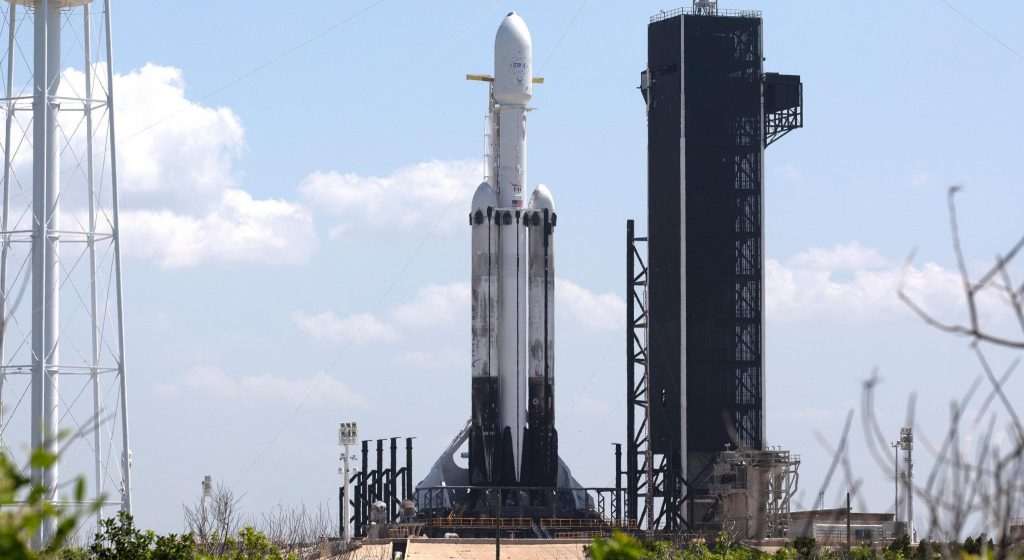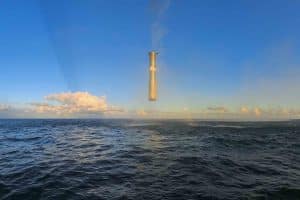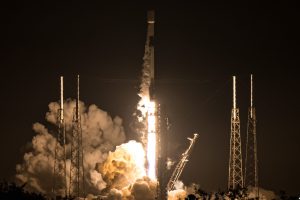After knocking out some figurative cobwebs, SpaceX has test-fired a Falcon Heavy rocket for the first time since June 2019.
Shortly before the static fire, NASASpaceflight’s Thomas Burghardt reported that Falcon Heavy’s first launch in 40 months – a mission for the US Space Force known as USSF-44 – had slipped from October 28th and October 31st to no earlier than (NET) 9:40 am EDT (13:40 UTC), Tuesday, November 1st. USSF-44 will be Falcon Heavy’s fourth launch since February 2018.
During its 10-second October 27th static fire, Falcon Heavy – the most capable rocket currently operational – appeared to ignite all 27 of its first stage’s Merlin 1D engines, likely producing up to 2350 tons (5.18 million lbf) of thrust. Only three liquid-powered rockets and two rockets augmented by solid rocket boosters have produced more thrust at sea level, and the last of those five vehicles (NASA’s Space Shuttle) was permanently retired in 2011.
NASA’s Space Launch System (SLS) rocket will retake the crown when it (hopefully) debuts later this year, but Falcon Heavy will remain the most powerful commercially-available rocket until SpaceX’s own Starship debuts. After Starship debuts later this year or early next, Falcon Heavy will continue on as the second most powerful commercial rocket for the indefinite future.
After more than three years of downtime, SpaceX unsurprisingly appeared to run into minor issues while preparing Falcon Heavy for a full wet dress rehearsal and static fire. SpaceX rolled the rocket – sans payload fairing – out to the launch pad late on October 25th, at which point the launch target had already slipped to October 31st. Falcon Heavy then sat horizontally for about 30 hours before SpaceX raised it vertical and fully attached the rocket and transporter/erector to the pad’s ground systems.
Another 12 hours of work later, SpaceX was ready to begin static fire test operations, and Falcon Heavy fired up at 8 pm EDT on October 27th, 50 hours after it rolled out. During Falcon 9’s most recent satellite launch out of Pad 39A, the rocket lifted off about 30 hours after rollout. While preparing for Falcon Heavy Block 5’s first launch (Flight 2 overall) in April 2019, the rocket went vertical 12 hours after rollout – 18 hours faster than Flight 4. Ahead of Flight 3 in June 2019, Falcon Heavy completed a static fire test 25 hours after rolling out – 25 hours faster than Flight 4.


Before it can launch, Falcon Heavy will have to return to LC-39A’s hangar to have its fairing (containing two classified USSF-44 satellites) installed and then return to the pad, repeating the rollout process. Falcon Heavy Flight 3 holds the record (5d 4h) for the shortest gap between a static fire and launch. Falcon Heavy’s updated launch target is 4 days and 14 hours after its static fire, meaning that SpaceX will have to break that record to launch USSF-44 as planned.
Update: The USSF-44 payload fairing – satellites safely encapsulated inside it – headed to Pad 39A less than four hours after Falcon Heavy Flight 4’s static fire.
Regardless, with a successful static fire under its belt, Falcon Heavy’s fourth launch is now all but guaranteed to occur within the next 5-10 days. The rocket’s fifth launch – carrying ViaSat’s first ViaSat-3 communications satellite – could follow as early as December 2022, and another four Falcon Heavy launches are currently scheduled between January and August 2023.





